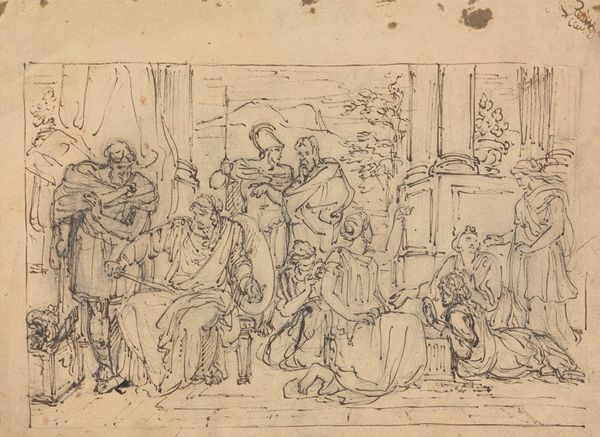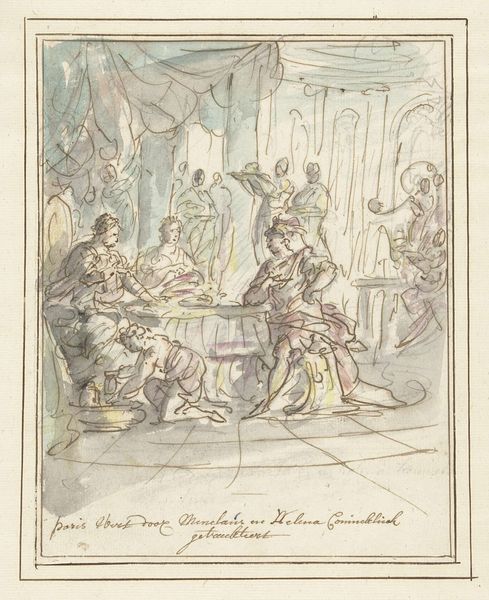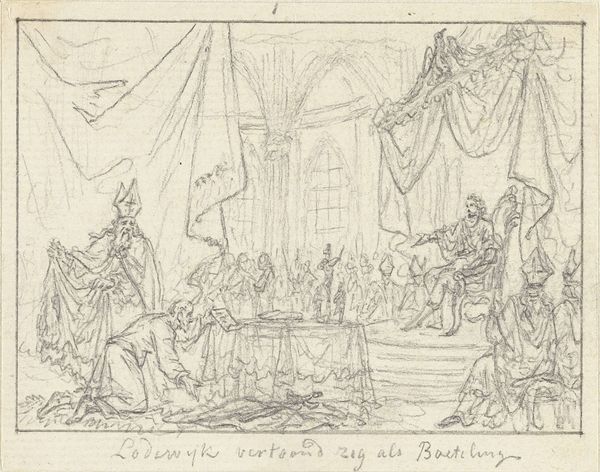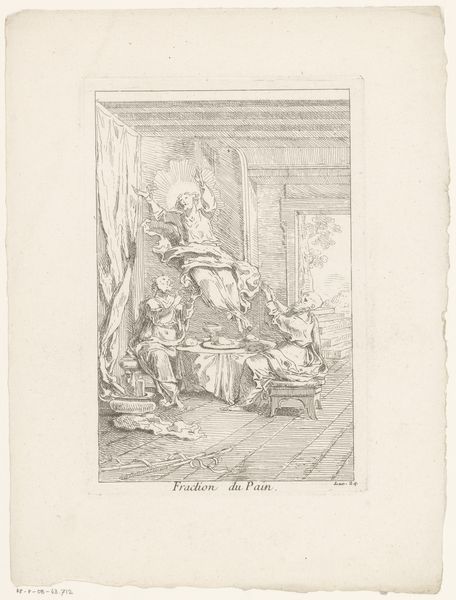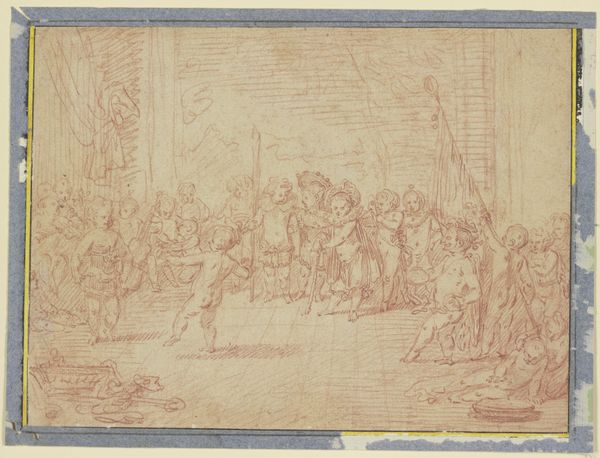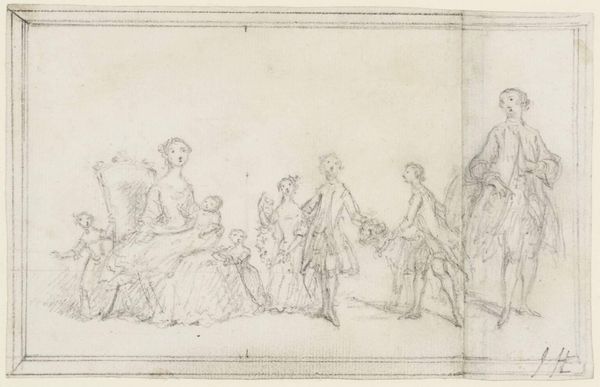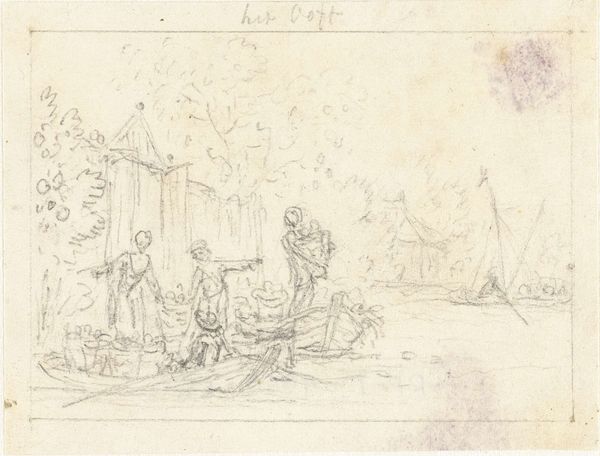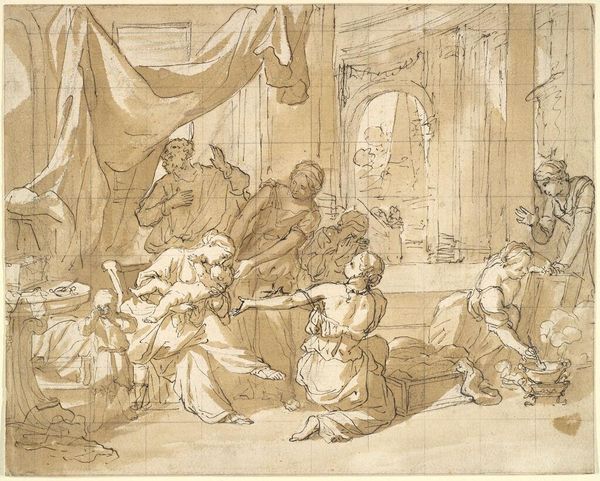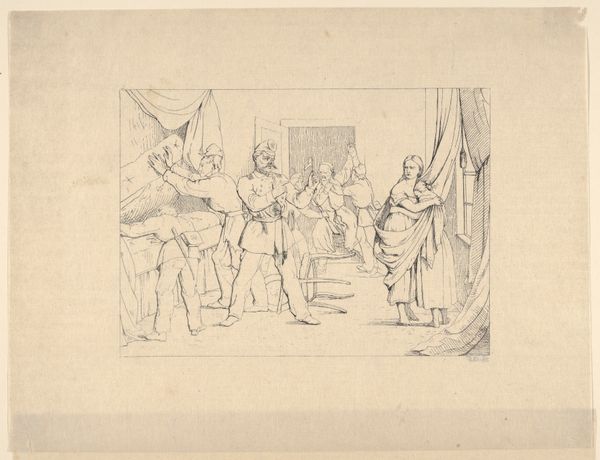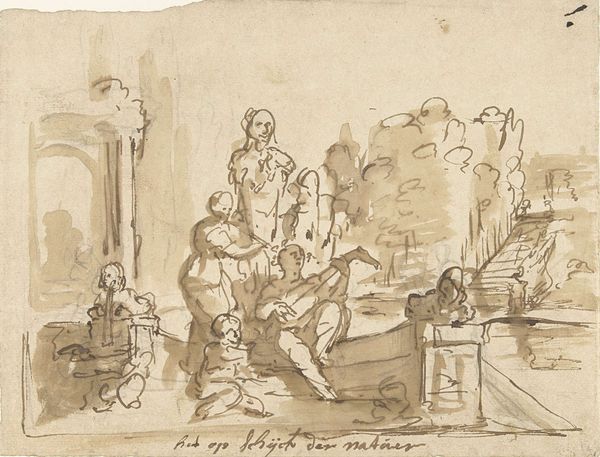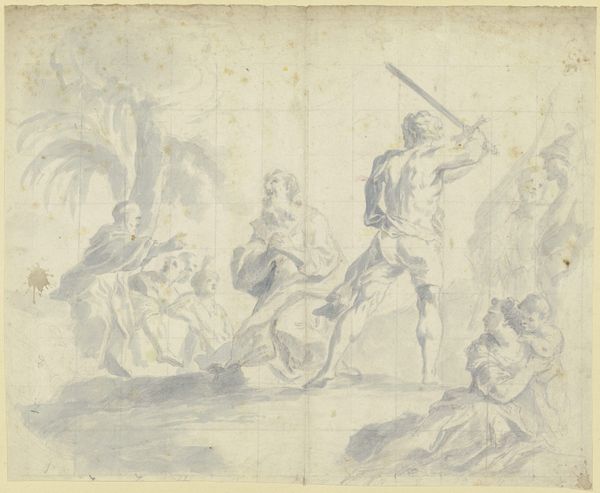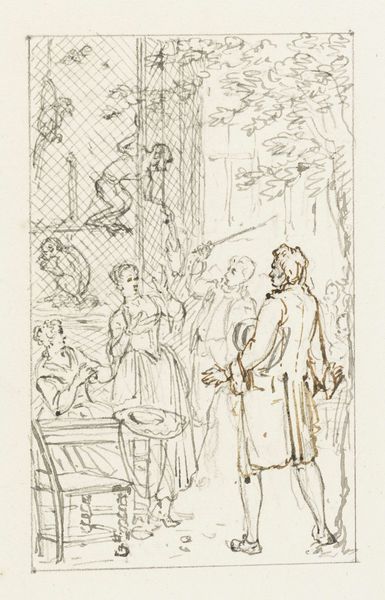
drawing, pencil
#
drawing
#
narrative-art
#
baroque
#
figuration
#
pencil
#
genre-painting
#
history-painting
#
academic-art
Dimensions: height 82 mm, width 102 mm
Copyright: Rijks Museum: Open Domain
Curator: Let's turn our attention to a pencil drawing titled "The Death of Charles the Bald." It was created sometime between 1722 and 1784, and attributed to Simon Fokke. You can currently find it here at the Rijksmuseum. Editor: Immediately, it feels theatrical. Like a stage set. The lines are so light and fleeting, almost as if the scene itself might vanish any moment. Melodramatic, maybe? Curator: That’s a perceptive read. Deathbed scenes like this were common fare for history paintings in this era, often leaning into the drama. Think about the symbolic weight here, too. Even in this sketch form, Fokke invokes ideas about succession, legacy, and the mortality of rulers. Note, for example, the carefully rendered finery of the royal bedchamber against the fragility of the king. Editor: Exactly, it's all show and little substance if you think about it. All that elaborate drapery above the bed feels like it’s about to swallow everyone whole. The artist captured something true about that era in a few spare lines—a king is always dying, replaced, reborn in pageantry. But who remembers Charles the Bald now, honestly? Curator: He represents more than just himself here; he’s a symbol of the Carolingian dynasty drawing to a close. That’s why I find it particularly poignant that Fokke renders even the soldiers and attendants around the king with a certain fragility. It suggests that power itself is fleeting. Editor: You know, I see something melancholic here. Despite the title proclaiming 'death,' there’s no real sense of tragedy or grief. Just…resignation. A sense that things happen as they must, empires rise and fall, and no one’s all that surprised by it. Like an echo in a mostly empty room. Curator: I think that's fair. Perhaps that detached observation speaks to the shifts occurring during the time the work was made—away from the grandiose baroque toward a more restrained and ‘objective’ Neoclassical sensibility. Editor: Well, whichever “sensibility” was trending, the image, to me, transmits the ultimate powerlessness we all face. The bare pencil line lays that truth painfully, beautifully bare. Curator: An astute observation. Simon Fokke, even in the form of a preliminary sketch, manages to communicate both the historical weight of a monarch’s demise, and its universally human aspect.
Comments
No comments
Be the first to comment and join the conversation on the ultimate creative platform.
